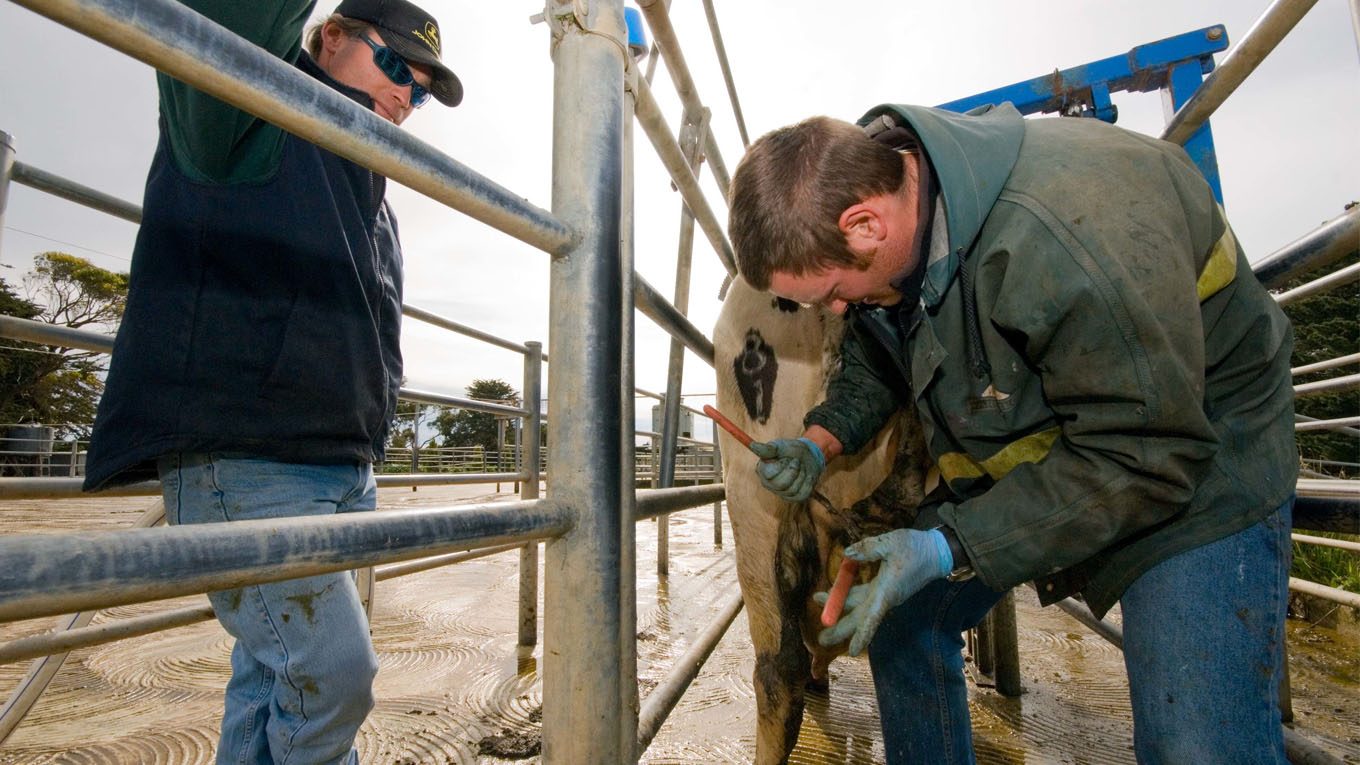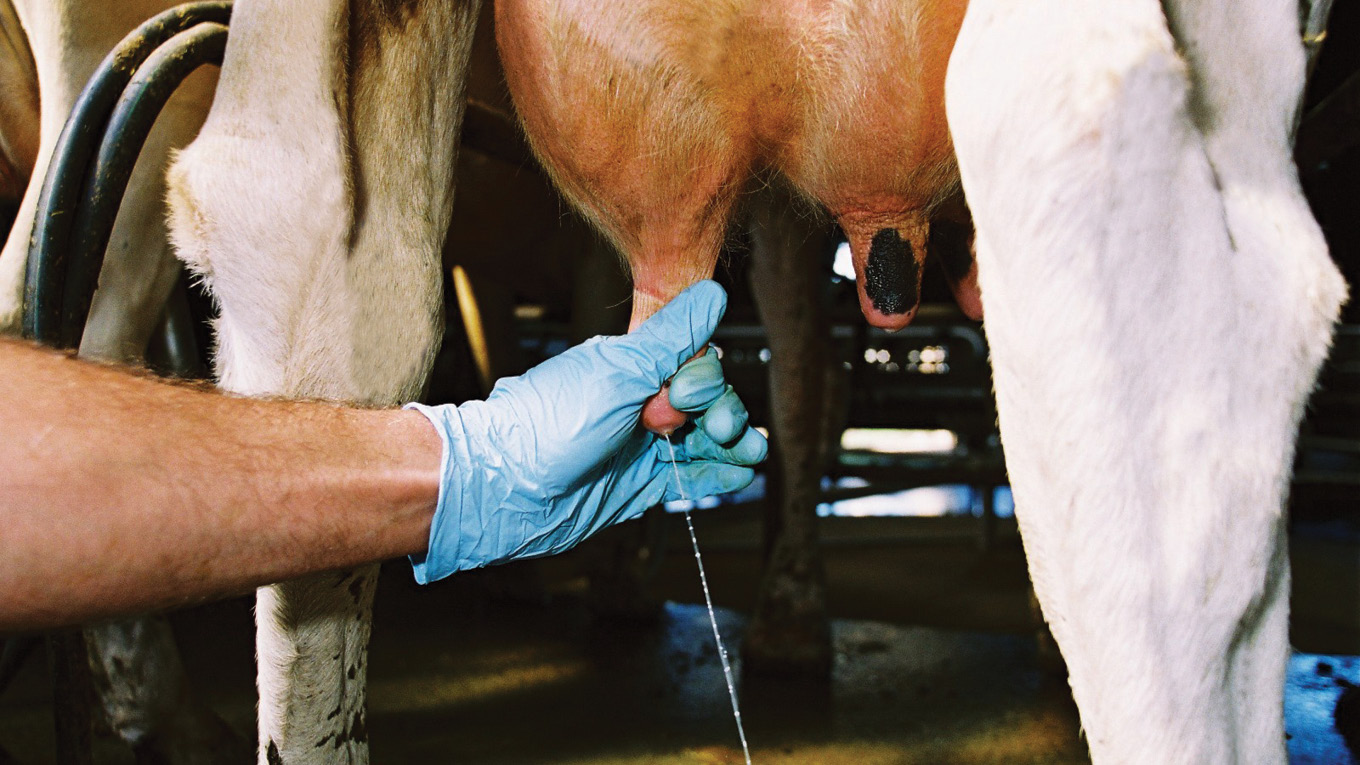Conditions of the Eye
The two most common conditions of the eye in dairy cattle are pinkeye and cancer of the eye. Pinkeye is contagious, affects mostly young animals and occurs mainly in summer as a result of a bacterial infection. Cancer of the eye is a heritable condition occurring mostly in older cattle and can be successfully treated by a veterinarian if detected early.
Pinkeye
What to look for
- Affected eyes are painful and develop a discharge
- Ulcers on the surface of the eye (the cornea)
- Animals may go off their feed and try to avoid bright light
- If left untreated, ulcers may rupture
Risk factors
- Overcrowding or yarding of animals
- Supplementary feeding of young animals in hay rings
- Long grass (particularly with seed heads)
- Dusty conditions
- High numbers of flies
- Stress
Cause
Also known as infectious bovine keratoconjunctivitis, pinkeye is a contagious disease caused by bacteria such as Moraxella bovis and Moraxella ovis. Flies spread the organism between animals.
Damage to the surface of the eye from dusty conditions, grazing long grass and the use of hay rings increases the risk of infection and spread. Therefore, the disease usually occurs in summer.
Animals likely to be affected
Pinkeye can occur in cattle of all ages but is most common in younger animals. Large numbers of animals may be affected under particularly bad conditions. Some animals may develop permanent scarring of the eye.
Confirming the diagnosis
Pinkeye is usually diagnosed by examining the eyes and considering the history of the animals concerned. If only one or two animals are affected, check closely for grass seeds or other eye injuries. In older animals – such as those greater than five years old – there is a chance it could be eye cancer. If unsure, consult your veterinarian.
Spread of the disease
The pinkeye organism persists in the farm environment and some animals can carry the infection without showing any symptoms (carriers). Flies spread the organism between animals.
Treatment
Pinkeye is a very painful condition and treatment should be started immediately.
Antibiotic eye ointments applied regularly can be effective treatments in mild cases of pinkeye. More severe cases may require administration of an injectable antibiotic and anti-inflammatory into the eyelid by a veterinarian. Occasionally, temporary surgical closure of the eyelid is also required.
Antibiotic powders were once commonly used for treating pinkeye but are no longer recommended as they cause further irritation.
It is helpful to apply a patch over the eye to assist healing and reduce spread.
Scarring of the eye can occur as a result of pinkeye and may impair vision. If left untreated, severe ulcers may rupture causing permanent blindness.
If only a small number of animals are affected, the eyes should be checked thoroughly for grass seeds. Grass seeds should be removed and the animal treated as for pinkeye.
Prevention
Pinkeye can be prevented by controlling flies and reducing exposure to the risk factors above. There are a number of insecticides approved for controlling flies in cattle.
A vaccine is also available for pinkeye and should be administered three to six weeks before the onset of the anticipated pinkeye season and then an annual booster given thereafter. However, there are some strains of the pinkeye bacteria in Australia not covered by the vaccine.
Wherever possible, affected animals should be separated to reduce spread.
Cancer of the eye
What to look for
- Growths on the surface of the eyeball, eyelids or third eyelid (also called the nictating membrane)
- Affected eyes often develop a discharge
- There may also be swelling of the eyelids, face or neck if the cancer has spread
Risk factors
- Cattle older than five years-old
- Holstein-Friesian, Hereford, Ayrshire and Simmental breeds
- Animals with non-pigmented eyelids or protruding eyeballs
- Exposure to UV light
Cause
Also known as ocular squamous cell carcinoma, cancer of the eye in cattle is caused by a combination of genetic, environmental and viral factors.
Animals likely to be affected
Cancer of the eye most commonly occurs in:
- Cattle older than five years-old
- Holstein-Friesian, Hereford, Ayrshire and Simmental breeds
- Animals with non-pigmented eyelids or protruding eyeballs
Cancer of the eye may occasionally affect younger cattle.
Confirming the diagnosis
Cancer of the eye is usually diagnosed by examining the eye and considering the history of the animal concerned. Alternative diagnoses include pinkeye and eye injuries, such as those caused by grass seeds. If unsure, consult your veterinarian.
Treatment
Detected early, cancers of the eye are treatable by a veterinarian. This may include surgery, cryotherapy or radiation. More advanced eye cancers may require removal of the eye. Treatment or surgery is not recommended if there is any evidence of spread. Animals should be monitored closely for reoccurrence even after treatment or surgery.
There is strict legislation in most Australian states about the sale of animals with eye cancer. More information about this legislation can be found by contacting the state's department of agriculture.
Prevention
Cancer of the eye is heritable and breeding programs should include culling of affected animals and, if possible, selection of cattle with pigmented skin around the eyes. Regular, close inspection of all cows will enable early detection and better chances of treatment.


